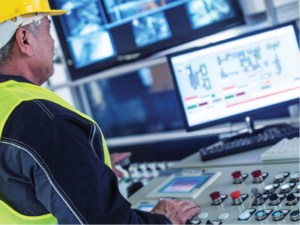Technology in the construction sector has undergone a great evolution in the last decade. Today you can see robots capable of creating a brick wall or 3D printers that create different pieces for works and projects.
This evolution in construction methods also means that the business itself is modified and has passed, in the case of offers, from the delivery of plans made with square and bevel and manual models, to numerous applications that allow visualization of plans and virtual 3D models that give a much more realistic view of the final result of the work.
The Technological Transition In Construction

Technology is reshaping the construction industry from its conventional perspective to the modern age. Technology can help the construction industry to carry out large-scale projects while also taking into account the impact on the environment. One of the advantages of technological development is that it helps the industry to reduce, reuse and recycle materials, which in turn greatly reduces carbon emission by avoiding the burning of waste materials.
Similarly, the method of project management and control has also changed. Thanks to the use of ERP software for construction such as Sigrid ERP, it is possible to obtain detailed control of the costs and income generated within a project or work.
In other words, we are in the midst of a technological revolution that affects all areas of the company. If the company adapts to change and incorporation of these new construction technologies, it will be on the right track to boost its business and get more out of it.
Technologies And Mobile Applications
Construction companies are simultaneously adopting mobile technologies and applications to monitor construction sites and projects. In this way data can be collected in real-time and transmitted between the workplace and the project management team, helping both to make changes. It allows you to send time cards, expense reports, work records, and other documents.
In addition to improving communication and collaboration, it saves many hours of data entry and increases hours of productivity.
Virtual Reality And Building Information Modeling (BIM)
Virtual reality is one of the technologies in the construction sector that is changing the rules of the game. It has given clients a vision of what their future homes might look like. This helps them to pre-plan the interiors of their houses and modify what they want before the actual construction.
Virtual reality provides a better experience with a 360º perspective to the client while choosing their property. The technology provides a real-time experience before the property exists.
It also provides a better understanding between the clients and the builder by allowing them to customize their properties. When a builder can customize a design based on a customer’s convenience along with recommendations and suggestions, they can create a unique, out-of-the-box experience.
Virtual reality technology improves geographic reach. Potential buyers from abroad can see the apartment in person at your doorstep and this will help them in their decision-making.
Construction ERP Software
In the vast majority of works and large projects, there is a collaboration system between several companies that come together for a time to jointly carry out the work or service. This is known as UTE, Temporary Union of Companies.
Coordinating all the work and processes in which so many people are involved at the same time is an arduous task. Project management is greatly simplified with the help of construction ERP software. Thanks to this type of technology in the construction sector, all users with access can see the status of the project in real-time and, with more information, can make better and faster decisions.
Advantages Of Having An ERP For Construction
- Avoid duplication of information within the company (invoicing lists in different departments) when performing tasks (creating invoices in two different systems, one for project management and the other for accounting)
- Minimize unnecessary e-mail communications, paper consumption, and loss of information between the different departments (approval of orders, invoices, manual signatures…)
- Always up-to-date information accessible to consult at any time and place by users who have access configured. You can enter from any device that has an Internet connection, be it a tablet, mobile phone, or computer.
- Exhaustive control of the costs attributed to the work or project, having identified the different natures such as resources, products or other expenses.
- Control of the orders that have been made within the project and the registered delivery notes.
- In the case of sales invoicing, it also allows you to plan the contract and from there create and record the invoices.
- On the other hand, by having project management and resource management unified on the same platform, with the ERP you can control the assignments of workers and machinery, both by work, by the operator, or by machinery.
- Estimate the financial value of the projects by calculating the WIP (work in progress) since, while a project is in progress, its degree of progress is probably not directly proportional to the billing.
- Access analytical tools to see which projects are more profitable, according to geographical location, type, size of work, type of client, etc.
You may like to read The best cooking recipe apps to learn to cook



